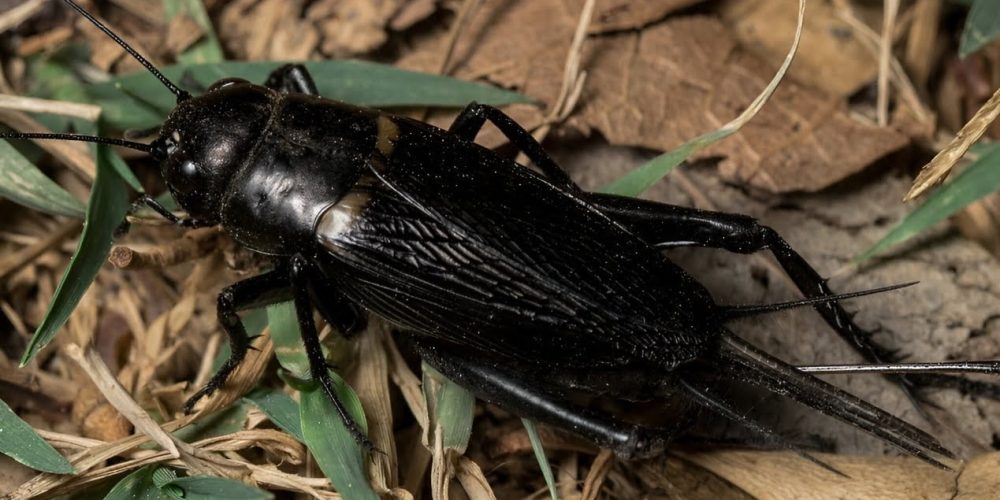Table of contents of the article
ToggleThe two-spotted field cockroach is a harmful insect that feeds on zucchini crops, resulting in yield losses. In this article on your website, World of Plants, we will learn about the life cycle of this insect and ways to combat it.
Symptoms of the two-spotted field cockroach in zucchini
- Scientific name : Gryllus bimaculatus
- the family : Orthoptera
- Nymphs and adults attack seeds in the soil.
- It attacks new seedlings and destroys them, and also bites the leaves and makes many holes in them.
- It attacks vegetable crops and causes holes.
- It detects the presence of the insect through the whistle it emits during the mating period
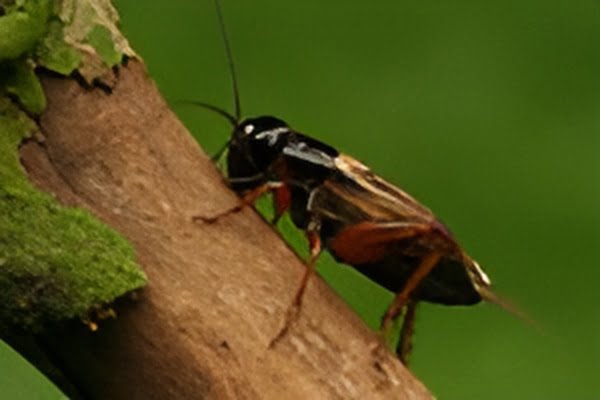
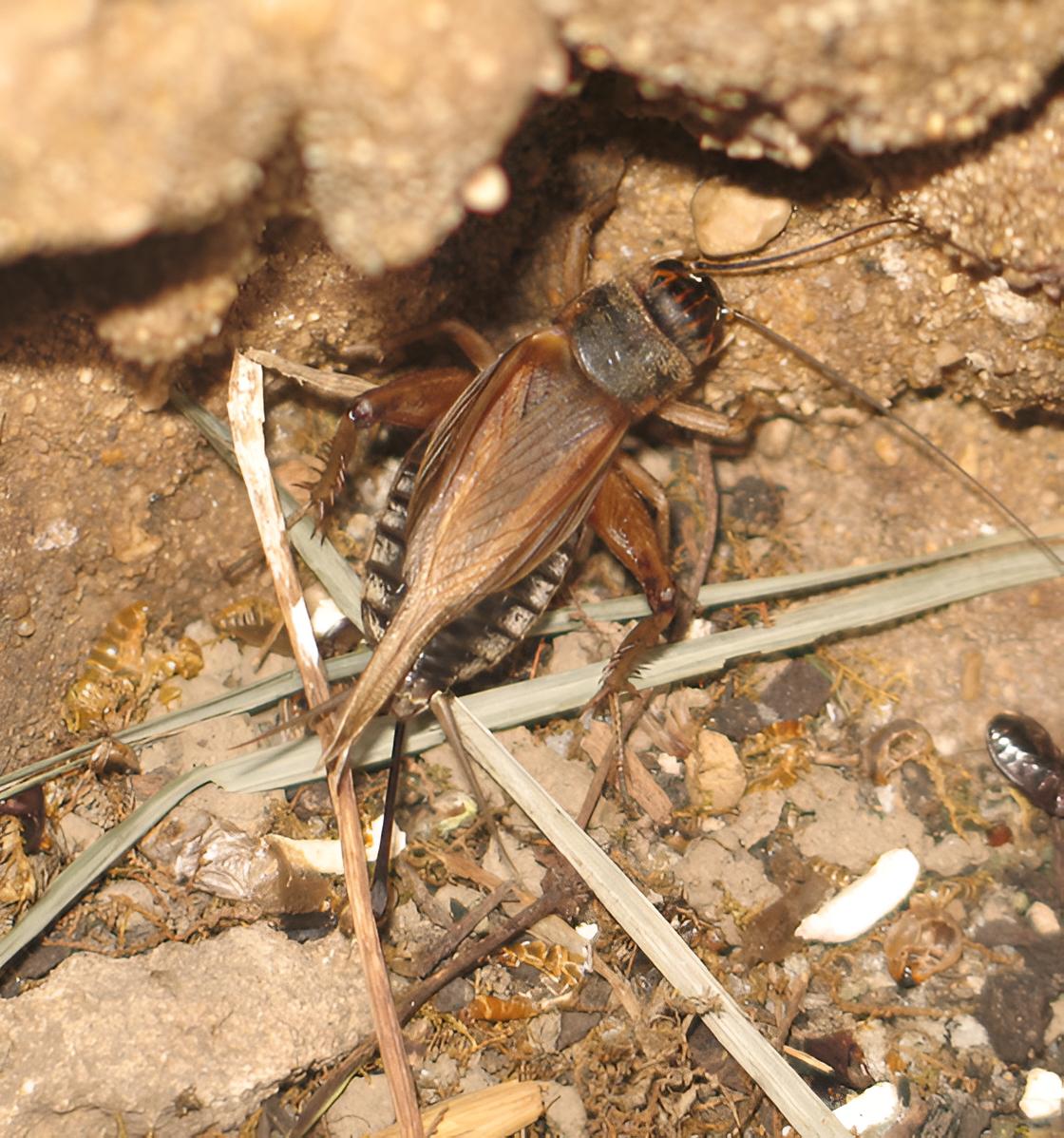
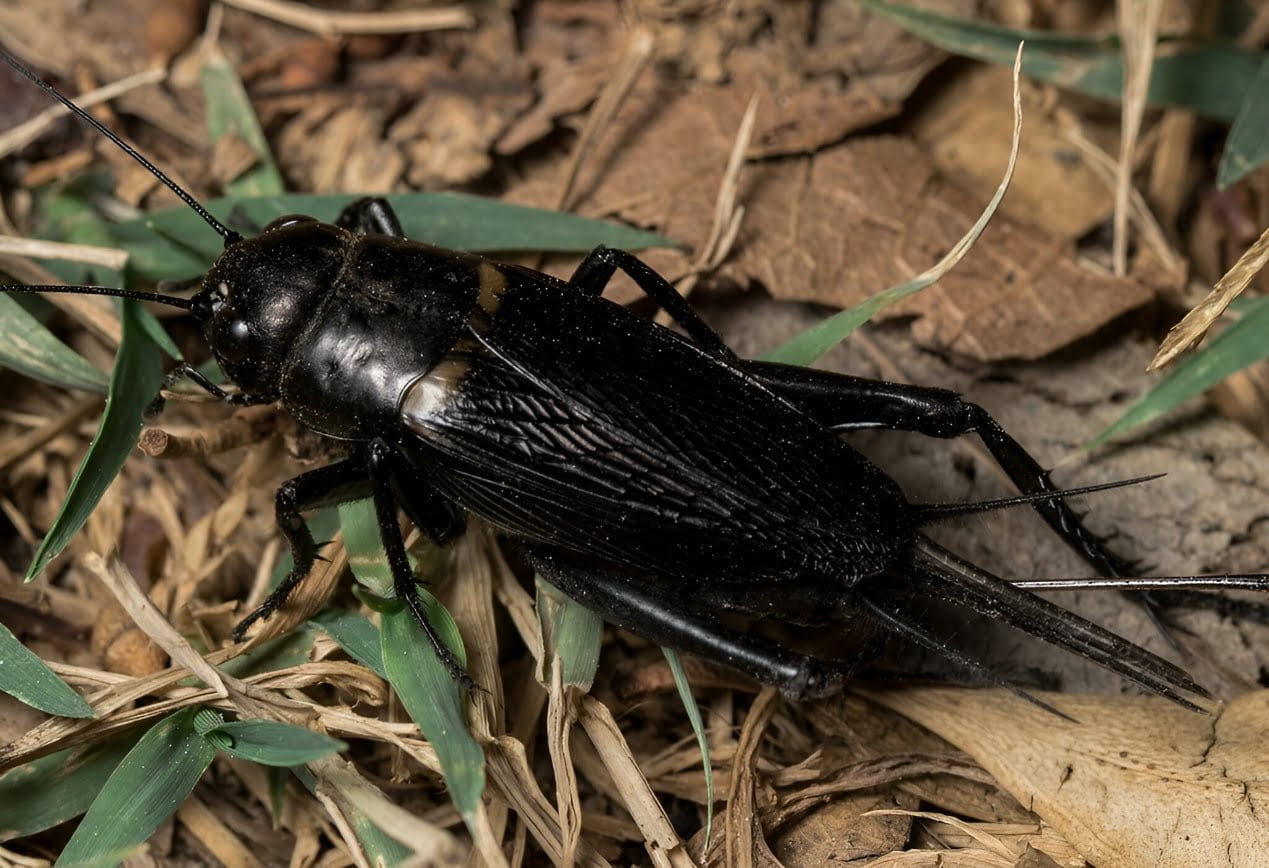
Description of the insect
The adult cockroach is black or dark brown in color, about 2.5 cm for the male and 4 cm for the female. The egg-laying apparatus is long, lanceolate, and the anal horns are long and undivided. There are two yellow spots at the base of the front wings. The hind wings are longer than the body.
Nymphs are black with brown spots on the abdomen, and the length of the wings varies depending on the stage.
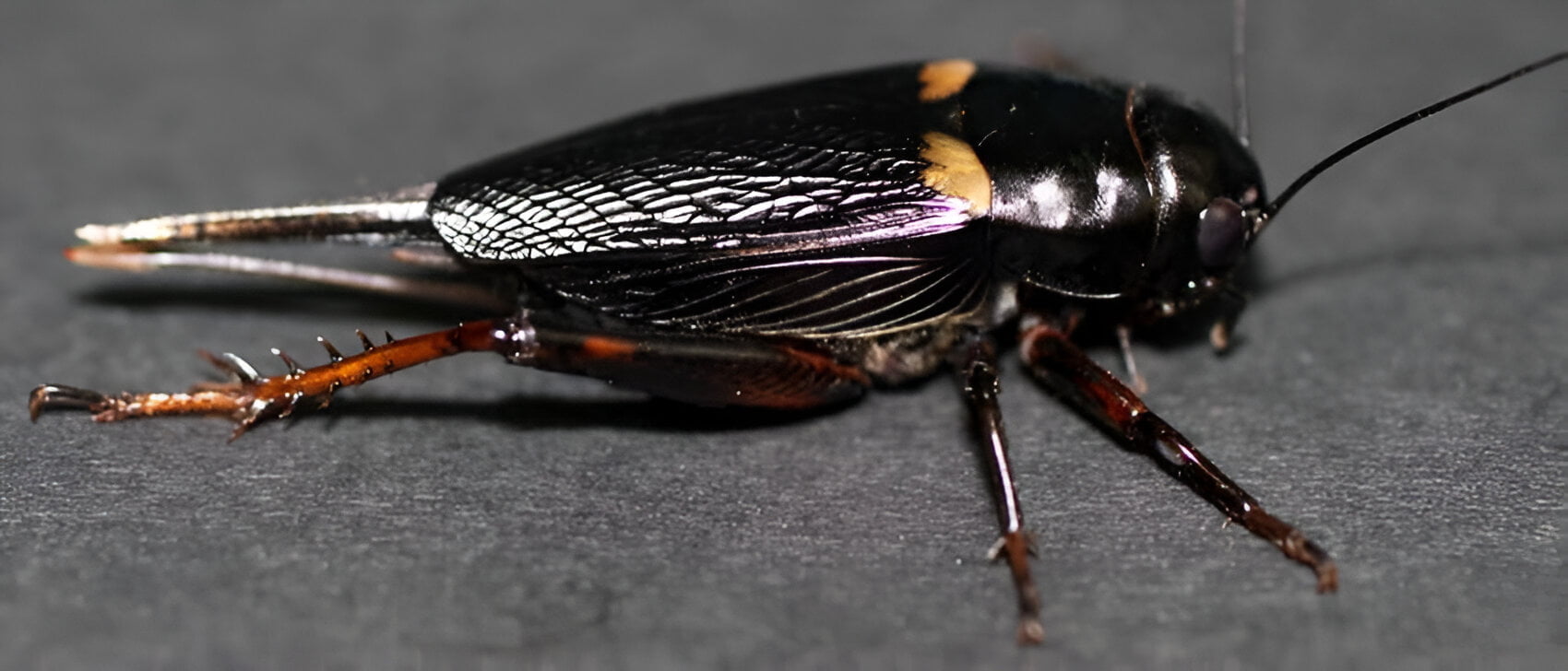
Causes of the two-spotted field cockroach in zucchini
- Also severe weather fluctuations, such as heavy rainfall and strong winds, leave the places where they hide in the winter to search for warmer places (it is preferable to live in humid and warm places).
- Carrying out agricultural projects on the lands, as plowing and turning the soil and changes in its topography push these insects to leave their hiding places and appear on the surface of the earth in abundance.
- They feed on a variety of foods, including rotting organic matter and small animals, so the presence of any source attracts the pest.
- It needs water to survive, so the presence of any water source attracts the pest.
Suitable conditions for the spread of the two-spotted field cockroach in zucchini
- Its activity is nocturnal, it stays away from bright places and is usually hiding in ground gaps under stones or under dense plant cover, or under fallen leaves away from direct light.
- Larval development depends on temperature and diet.
Development cycle of the two-spotted field cockroach in zucchini
- It is believed that the housing stage is the adult stage. The adult insect lives for 2-3 months, where the females lay eggs in the soil.
- Eggs are laid in cavities (1-8 eggs) in wet areas, where one female lays a total of 500 eggs. The eggs hatch when moisture is available to hatch into nymphs that reach the adult insect stage in 30 days. The insect has 2-3 generations per year
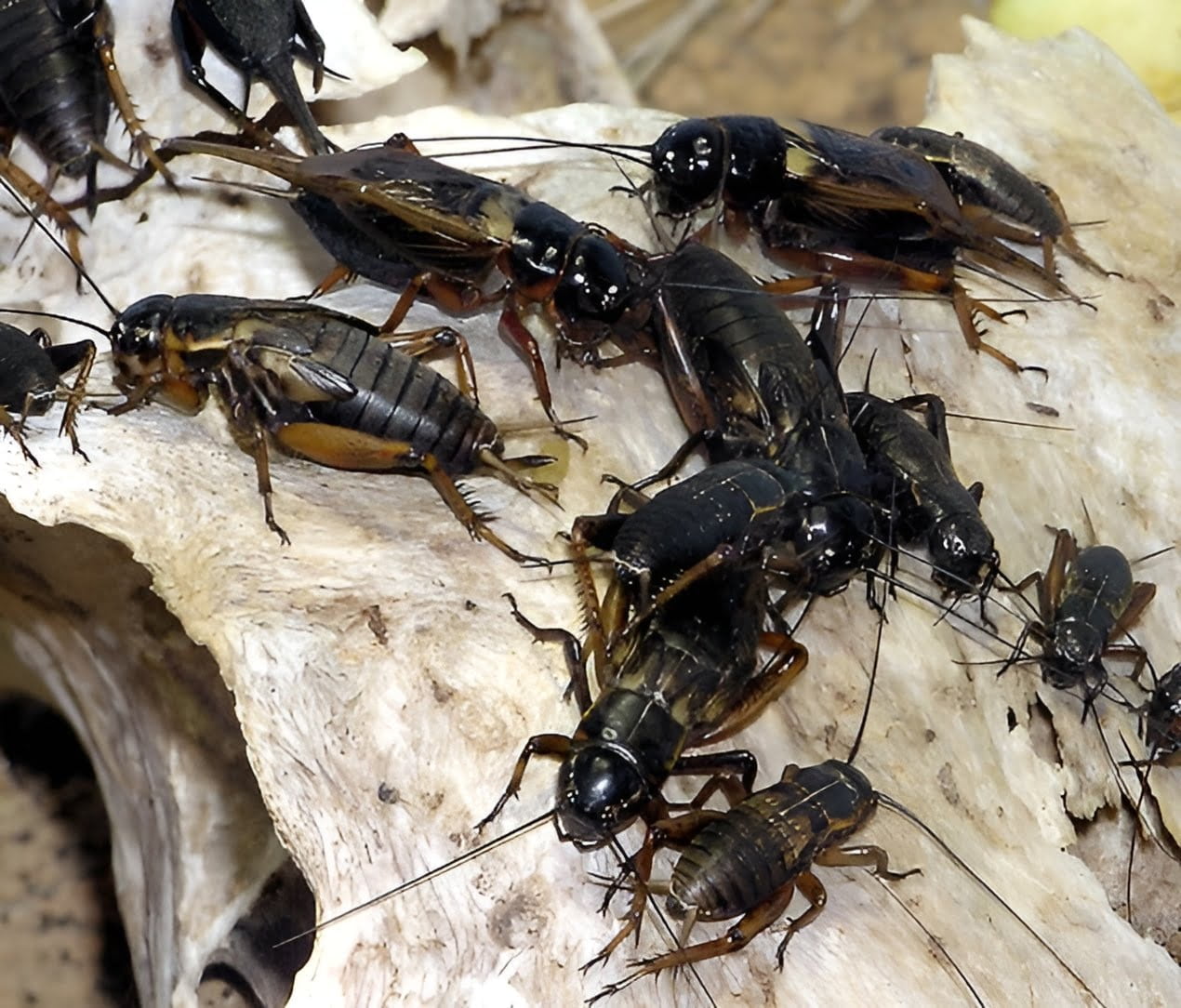
Losses of the spread of the two-spotted field cockroach in zucchini
- Annoying voice
- It is an ideal meal for spiders, so having it somewhere may attract spiders.
- The heavy presence exposes flowers and plants to danger, but its effect is small compared to other insects that are most harmful to plants.
- Bad smell.
Control strategy
Preventive measures to prevent the occurrence of the two-spotted field cockroach in zucchini
- Removing crop residues and leveling the soil eliminates a large portion of the pest.
- Turn off the light during cockroach activity.
- Remove the insect's breeding and feeding sites
- Shorten plants. Insects build their nests in tall grasses and other plants. Keep your plants trimmed short so they have no place to build a nest
- The process of soil hoeing is used as a main part of the control, where the eggs are eliminated.
Chemical and organic control recommendations against the two-spotted field cockroach in zucchini
- Organic control
- Bran-based poison baits can be used with a 5% toxin.
- Use coffee powder to kill cockroaches.
- Through natural enemies: lizards and spiders hunt cockroaches.
- Chemical control:
- It can be killed by spraying the places where it is found with one of the types of insecticides. These places must be sprayed more than once, focusing on spraying holes, entrances, windows, etc.
In conclusion, we would like to note that we, at the world of plants website, offer you all the necessary services in the world of plants, we provide all farmers and those interested in plants with three main services::-
- Artificial intelligence consulting service to help you identify diseases that affect plants and how to deal with them.
- Blog about plants, plant diseases and care of various crops ... You are currently browsing one of her articles right now.
- An application that provides agricultural consultations to clients, as well as a service for imaging diseases and knowing their treatment for free – Click to download the Android version from Google Play Store، Click to download the IOS version from the Apple App Store.
References
- Hochkirch, A., Willemse, L.P.M., Rutschmann, F., Chobanov, D.P., Kleukers, R., Kristin, A., Presa, J.J. & Szovenyi, G. 2016. Gryllus bimaculatus. The IUCN Red List of Threatened Species 2016: e.T68382951A74519241. Accessed on 18 November 2022.
- ADAMO, Shelley A.; HOY, Ronald R. Agonistic behavior in male and female field crickets, Gryllus bimaculatus, and how behavioral context influences its expression. Animal Behavior, 1995, 49.6: 1491-1501.
- MERKEL, Gisela. The effects of temperature and food quality on the larval development of Gryllus bimaculatus (Orthoptera, Gryllidae). Oecologia, 1977, 30.2: 129-140
- Gryllus bimaculatus – inaturalist
- The effects of temperature and food quality on the larval development of Gryllus bimaculatus (Orthoptera, Gryllidae) – springer
- Agonistic behaviour in male and female field crickets, Gryllus bimaculatus, and how behavioural context influences its expression – sciencedirect




